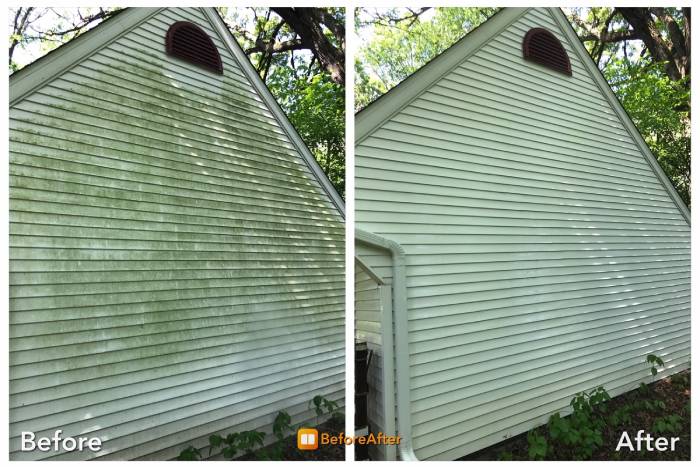
Revitalize Home Siding with DIY Power Washing
Over time, the exterior of your home can accumulate dirt, grime, and mildew, diminishing its curb appeal. Power washing your home siding is a highly effective and satisfying DIY project that can bring back the sparkle. In this guide, we’ll walk you through the steps to power wash your home siding, revitalizing its appearance and enhancing your home’s overall aesthetic.
Selecting the Right Power Washer
Before diving into the power washing process, it’s essential to choose the right power washer for the job. Gas-powered and electric pressure washers are the two main types available. Gas-powered washers are more powerful and suitable for larger areas, while electric washers are quieter and more user-friendly for smaller projects. Consider your home’s size and your comfort level with the equipment when making your selection.
Preparation and Safety Measures
Preparation is key to a successful power washing project. Start by clearing the area around your home, removing any obstacles that could impede your progress. Cover nearby plants and landscaping with tarps or plastic sheeting to protect them from the cleaning solution. Additionally, wear appropriate safety gear, including eye protection and closed-toe shoes, to shield yourself from debris and cleaning chemicals.
Inspecting and Repairing Siding
Take a close look at your home siding before starting the power washing process. Identify any loose or damaged siding panels, and make necessary repairs before proceeding. Power washing can exacerbate existing issues, so ensuring your siding is in good condition is crucial. Replace any damaged sections and secure loose panels to avoid water infiltration.
Applying a Cleaning Solution
To tackle tough stains, mildew, and grime, it’s often beneficial to use a cleaning solution along with your power washer. Various commercial cleaning solutions are available, or you can create a DIY solution using a mix of water, bleach, and mild detergent. Apply the cleaning solution from the bottom up, allowing it to sit for a few minutes to break down contaminants.
Setting the Right Pressure and Nozzle
Adjusting the pressure and selecting the appropriate nozzle for your power washer are critical steps to ensure effective and safe cleaning. For home siding, a pressure range of 1500 to 2500 PSI is generally suitable. Start with a wider nozzle for broader coverage, and gradually switch to a narrower nozzle for more stubborn stains. Test the pressure on a small, inconspicuous area before moving on to larger sections.
Proper Technique for Power Washing
Maintaining the right distance and angle while power washing is crucial for optimal results. Hold the nozzle at a 45-degree angle and maintain a distance of about 8 to 12 inches from the siding. Avoid directing the water stream upward, as this can force water behind the siding, potentially causing damage. Work methodically, moving from one section to another to ensure even cleaning.
Rinsing and Drying
After applying the cleaning solution and power washing, thoroughly rinse your home siding. Ensure that all cleaning agents and debris are washed away. Pay extra attention to any nooks, crannies, and corners. Allow the siding to dry completely before assessing the results. A sunny day is ideal for faster drying.
Inspecting for Any Damage
Once the siding is dry, inspect it closely for any signs of damage or lingering stains. Power washing should enhance your home’s appearance, but it’s essential to identify and address any issues that may have surfaced during the process. Look for areas that may need additional cleaning or repair.
Protecting Nearby Surfaces
During the power washing process, be mindful of nearby surfaces such as windows, doors, and outdoor furniture. Water and cleaning solutions can affect these surfaces, so take precautions to protect them. Cover sensitive areas with plastic sheeting or use a lower pressure setting when working in proximity to delicate surfaces.
Environmental Considerations
Lastly, be mindful of the environmental impact of power washing. Some cleaning solutions can be harmful to plants and wildlife, so choose eco-friendly options when possible. Additionally, check local regulations regarding water usage and disposal, and aim to minimize any negative effects on the environment.
Explore Fund Your Purpose for DIY Inspiration
For more DIY inspiration and home improvement tips, visit Fund Your Purpose. The platform offers valuable resources to empower you in various DIY endeavors, including power washing your home siding. Whether you’re enhancing curb appeal or tackling other projects, Fund Your Purpose is your go-to source for practical insights and expert advice.










